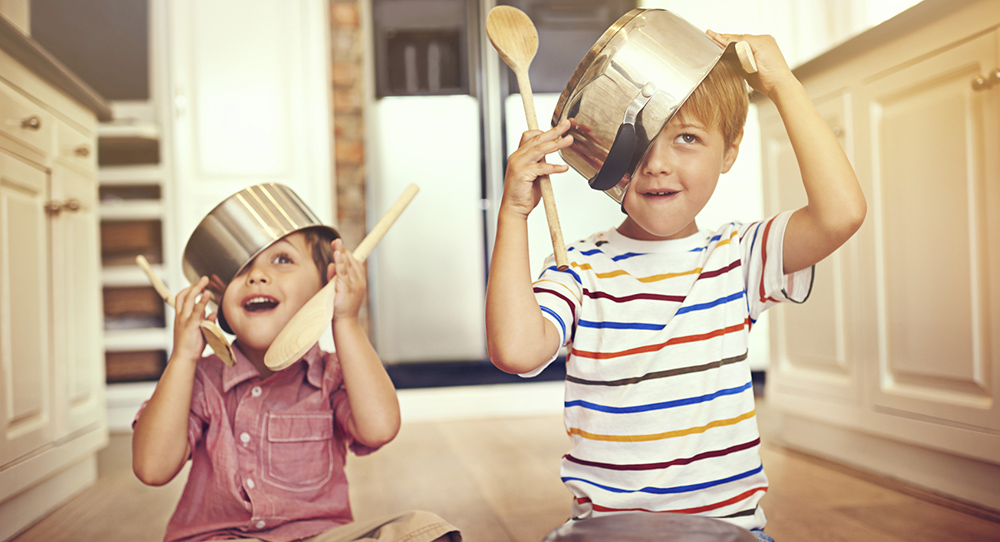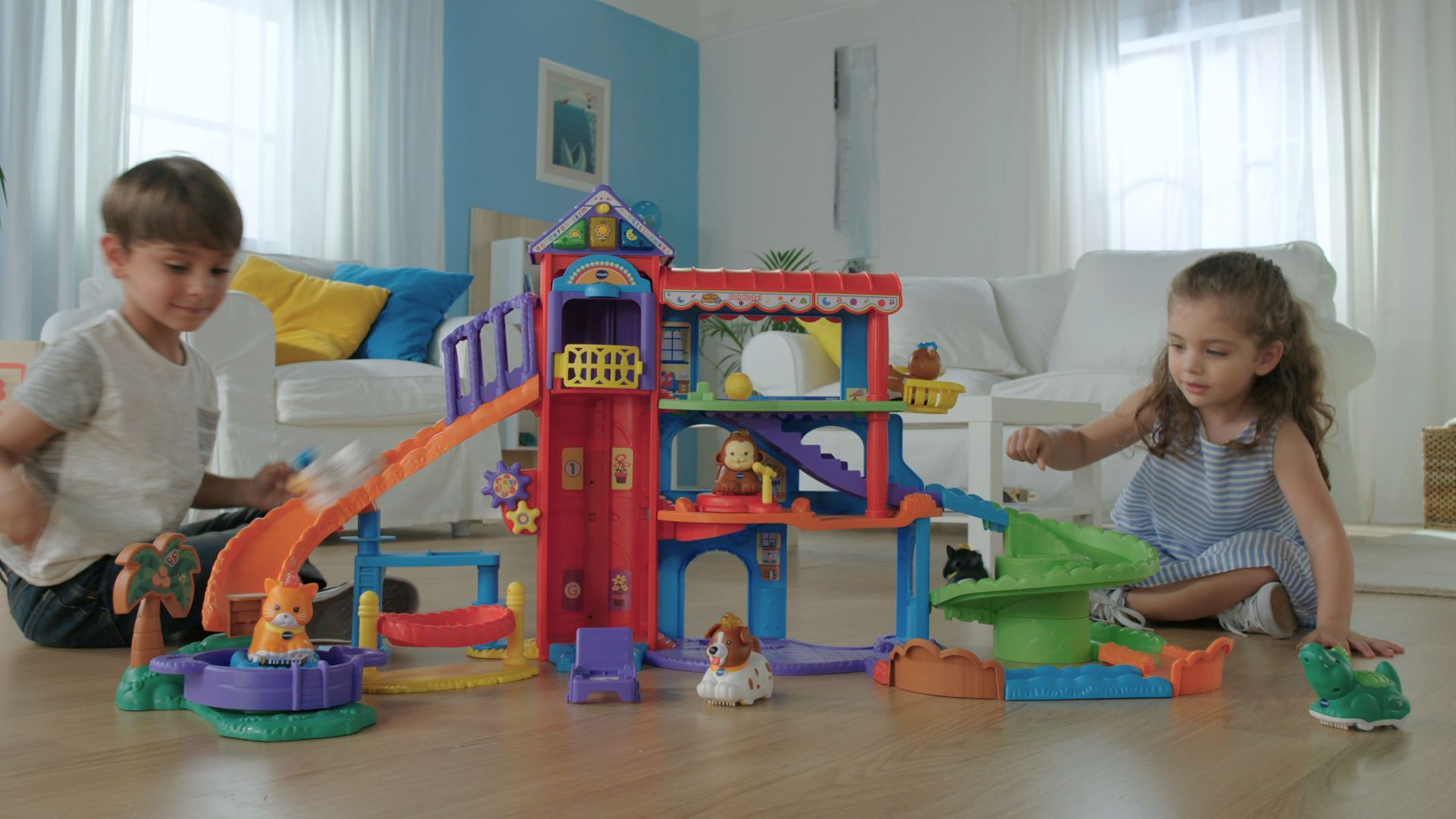Help your child to be happy
Child psychologist Dr Angharad Rudkin talks about how children learn through play and how we can encourage healthy play for our children's wellbeing

Dr Angharad Rudkin is VTech’s resident child psychologist, and a Child Clinical Psychologist at the University of Southampton, with a particular interest in child mental health. Here, she looks at the meaning of ‘child’s play’, how children learn about themselves and the world through play and how we can encourage positive playtime.
There are many definitions of play, but there is a general consensus that for an activity to be play (rather than work or education), children need to freely choose it, it needs to be pleasurable and it needs to be active*. Play also helps in the development of self-expression, communication, relationships and new skills.
As for nature versus nurture, gender-neutral toys are increasingly becoming the norm. But boys and girls do simply like playing with different toys. For example, a recent study has found that pre-school girls tend to show more interest in toys that have been labelled “girls’ toys” and which are in a feminine colour, whereas boys were naturally more interested in masculine toys**.
What can parents do to encourage healthy play in their children?
Play is most enjoyable and most informative for children if they lead it, which is why child-led play is popular. Parents can encourage play by following their child’s lead, stepping in and out when needed (and directed by the child), and going with their child’s flow of play. Children structure their play very differently to how adults would, so it’s important not to put your own agenda onto the play.
I would argue there is no such thing as unhealthy play. If during active physical play children hit each other and become upset, then that kind of play can be discouraged, but otherwise the rest of the play time can be seen as healthy. Even moments of disagreement (such as tears over sharing a toy) can be healthy as they are valuable opportunities for children to learn about themselves and others through developing skills of negotiation, turn taking etc.
Why is it important to have healthy play for a child’s happiness and wellbeing?
Play to a child is what work is to an adult. It is how children learn, grow, have fun and overcome challenges. It is the way by which they make sense of the world and learn how to be within it. Thankfully, we have moved away from the era of regarding children’s play as a mere way to pass the time. It is now known that play is essential to a child’s development and wellbeing.
Children need to imagine and they need to act out (as language is still not their main mode of expression) and play gives them a safe structure within which to do this and in a way which they can control (in contrast to the rest of a child’s life which is heavily controlled by adults around them).
Why is it important to allow children to discover what they like and don’t like?
As adults, we are far more likely to own our views and preferences if we have found out about them ourselves. We don’t appreciate being told that we need to like one thing over another, and that is exactly how it is for children.
Through child-led play, children can learn what they like and don’t like, what they feel good and not so good at, what they get positive feedback from other children about. Yes, adults can guide but children will own their feelings so much more if they have discovered them by themselves.

Can children be influenced by other children’s play or are they self-teaching?
Yes, absolutely, they can be influenced by other children. Children learn through watching and then imitating. Watching how others play with a certain toy will influence how they do it. This learning is so important and is part of why play needs to be child-led, because children will relate more to how other children are playing with something than how adults are playing with it.
So, there will be a mix of watching and self-discovery through the natural trial and error of free-flowing play (as opposed to an adult stepping in to show how something is done with a toy).
Would you suggest mixing your child with children of similar ages or is it beneficial to have a mix of ages so that they learn from older children?
Children play differently with others their age versus others of a different age. Research with siblings has shown that a child’s play is more sophisticated and complex if they are playing with older siblings. So, it’s about getting the right balance between children playing with older children so that they can learn new skills and be pushed out of their comfort zone a bit, and children not feeling so anxious about being left behind/unable to do something compared to their playmate, ending up with the child closing up and stopping the play.
Offering your child a mix of play opportunities is the ideal whether it’s indoor/outdoor, in pairs/groups or with younger/older children. It’s also important to provide toys which allow for individual play as well as with others such as VTech’s Toot-Toot Pet Hotel (pictured above), as this provides children with the opportunity to build their confidence before involving new friends. Through this rich variety of experience children will learn about themselves, others and the world in a more comprehensive way than we could ever teach them just by telling them.
For more information on VTech’s toys, visit vtech.co.uk
*Hughes, FP (2009) Children, Play and Development. SAGE Publications
**Weisgram, ES, et al (2014) Pink gives girls permission, Journal of Applied Developmental Psychology 35(5) 401-409
Photograph: iStock







